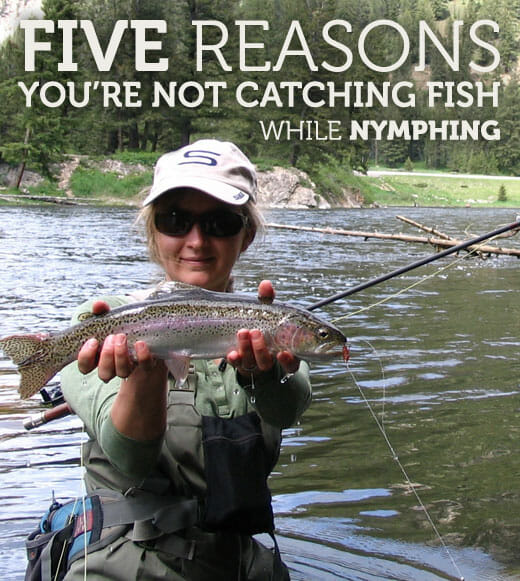5. You’re only watching one point of drift
The trapped-air indicators that have been in vogue for the past few years do a great job at subtly dragging through the current undetected. When you’re only dragging a little, the smooth surface of these indicators doesn’t show the telltale moto
rboat wake that we all look for to identify drag.
Instead of watching just your indicator, watch the indicator AND the tip of your flyline. Having two points of reference will key you in when you’re dragging and alert you to more subtle strikes. Another alternative is to use two small indicators set about a foot apart — this is my preferred method.
4. Your flies and indicators are moving at different speeds
If you don’t get your flies, your weight and your indicators all in the same current, all bets are off. If your flies are moving slower than your indicator you’ll drag. If your flies are moving faster than your indicator, they’re probably drifting well, but you’ll probably miss the eat. In order to detect a take your indicator will have to travel over the stopped flies and then the length of the leader before your indicator so much as twitches..
Try to put everything in a straight line within a single current with your flies furthest upstream, your weight next and finally your indicator setup.
3. You’re not using enough weight
You have to get your flies down to the fish if you want them to be eaten. Drop your flies in front of you and count how long they take to reach bottom. If it takes them seven seconds and you’re getting a 15 second drift, your flies are only at an effective depth for about half of the drift.
Use enough weight that your rig occasionally hits the bottom. Carry lots of tin shot and adjust the amount of weight you’re using often.
2. You haven’t thought out your approach
I can’t tell you how often I see people standing in the water they should be fishing while they’re chucking their bugs into faster, shallower water. This often happens to those who use a “wade first, survey the scene second” approach.
Before you take a single step from where you’re currently fishing, scout out your next spot. Survey your wading options and plan your route. Think about where you need to be standing in order to make the best cast
1. You have too much line on the water
Managing a lot of line on a upstream-and-slightly-across dry-fly presentation provides its challenges. A lot of us learned to fly fish with dry flies and we try to fish our nymph rigs the same way.
Don’t have more line off your reel then necessary and keep it off the water. Stand at a 45-degree angle to the water you’re fishing and keep as much line off the water as possible. Hold your rod tip high and then raise it higher and strip in line as the drift begins to come near you. Lower your rod tip and start to feed line out behind the indicator as your rig drifts below you.



